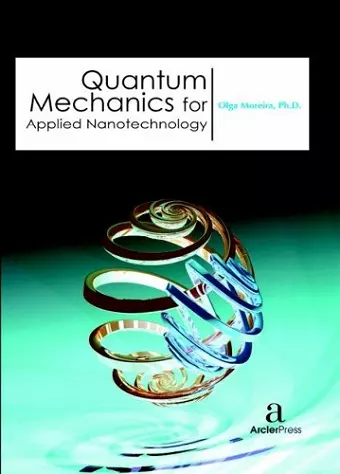Quantum Mechanics for Applied Nanotechnology
Format:Hardback
Publisher:Arcler Education Inc
Published:30th Nov '16
Currently unavailable, and unfortunately no date known when it will be back

Quantum dots (QDs) are one of the first nanotechnologies to be integrated into the designing of pharmaceutical and biomedical instruments. This book starts by reviewing their structure, quantum confinement effects, band-gap characteristics and applications to the various branches in nanotechnology (e.g. bioimaging, solar cells, light emitting diodes [1] ). Fabrication methods of QDs are also included in this review, in particular, the droplet epitaxial method [2]. In the case of bulk materials, the energy band-gap is fixed by the choice of material. However, QDs are a special class of semiconductors, they can be regarded as an artificial molecule with a band-gap dependent on its size. The usage of QDs as an attempt to replace bulk materials (e.g. silicon and copper indium gallium selenide) in solar cells is discussed in some detail [3]. QDs size-dependent bandgap allows the fabrication of nanostructured or multi-junction solar cells and, therefore, a variety of materials can be used to improve efficiency by harvesting multiple portions of the solar spectrum. Experiments have demonstrated that, due to unique optical traits within luminescence characteristics and electronic properties, QDs possess multiple potential applications, such as labeling and tracking single biomolecules and cells in real time, in vitro as well as in vivo; assessing cell growth in damaged tissue; pH probes for the study of enzyme reaction kinetics; imaging and sensing of infectious diseases; as well as the detection of cancer biomarkers [4, 5]. A discussion about the toxicity of QDs applications to nanosize drug delivery systems is also discussed [6]. Next, this book overviews of the recent advances in quantum sensors. A technique of filtering a single molecule with an atomic vapor notch results in an improvement of about 15% in a confocal and in a wide-field configuration. This can potentially enhance DNA detection efficiency, better sensing and localization accuracies in material science and applications in microbiology. [7]. The combination of a low milliamperes X-ray source and a microlens-based sensor may potentially reduce dose exposure without compromising the resolution of dental digital images [8]. Ultra-stable quantum cascade lasers can be integrated into a real-time, nanometric displacement sensor with a resolution on the order of ?/1000 [9]. A spectroscopy method combining the use of entangled photon pairs and plasmonic nanoparticle arrays with Fano resonance have...
ISBN: 9781680943535
Dimensions: unknown
Weight: unknown
273 pages